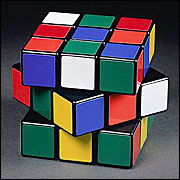The junior high factor
We were the kids who didn’t quite fit in.
I mean, come on—have you looked at us? Really? I say this with a complete and total sense of shared identity: I see dorks everywhere I look. Dorks of every race, ethnicity, gender, affectional orientation, age, economic background, educational background—you name it, we’ve got it covered.
I’ve been pondering this “dork identity” issue for several years now, and it seems to me that, for most of us, our dork essence is something we came to understand about ourselves in junior high school.
Surely not every UU will identify with having been a junior high dork, but I think it fits more of us than perhaps we’re comfortable admitting: the kids who got picked on (or who never got picked at all for team sports); the kids who chose band over PE so they didn’t have to be embarrassed by their lack of physical skill; the kids who didn’t quite fit in with the mainstream for whatever reason—perhaps it was a love of books, or artistic inclinations, or being “sensitive,” or having some kind of physical limitation.
Like most groups in that difficult time of adolescence, the dorks tended to find each other and create their own communities. In the places I lived and the schools I went to, most of my fellow dorks were white. But there were a few persons of color in the larger group, and as I have checked my “dork” thesis with a broad cross-section of UUs over the past few years I have heard many times from persons who, in junior high, might have called themselves “dorks of color” and think my thesis is spot-on. But they also tell a painful story of the double-whammy of being a cultural/racial minority within a social minority. The pressure to fit in during this often excruciatingly difficult developmental period is hard enough on kids who are part of the majority culture. My sense is that it is much, much harder on those who identify with a minority culture.
I would like to say that the transition to adulthood has done away with junior high categories and the sense of living in separate worlds from the people I once perceived as popular, but the reality of how we relate to one another across the various political, cultural, social, and religious spectra tell me that we have a lot of work to do to heal that separation. What I do know is that when I come into a room full of people, I quickly get a sense of whether or not these are “my” people. And the reality is that I am often uncomfortable with groups—especially church groups—who aren’t UUs. Far too often, something about those “other” folks reminds me of the kids who used to beat me up, or tried so hard to make me feel like I didn’t belong, or who stood idly by as their peers did these things in their name, too afraid of being cast aside to say or do anything to stop them.
That’s why it’s important to me that my church be a place where I feel safe. When we’re talking about safety in our congregations, my gut sense is that our claim of welcome only goes so far. There are people we really aren’t comfortable being around, and these are the people we are (unconsciously, for the most part) trying to keep out—the ones who, long ago, first caused us to doubt our inherent worth and dignity. We have worked too hard, come too far, to let them do that to us ever again. No wonder we’re so good at keeping our faith and its message of welcome and redemption a secret! But that’s not exactly a recipe for spiritual maturity, is it?
What I hope is that our communities will be places where we hold one another accountable for doing the work that leads us to grow personally and spiritually, that leads us to the possibility of healing those old wounds. If we do that with integrity, we will become the church we claim to be, and we will experience tremendous growth across a broad spectrum of measurable categories. In the end, the question of whether we are living our ideals and values with integrity is the only one that really matters to me.
For a guide to related articles, read "What is UU culture?"
blog comments powered by Disqus







